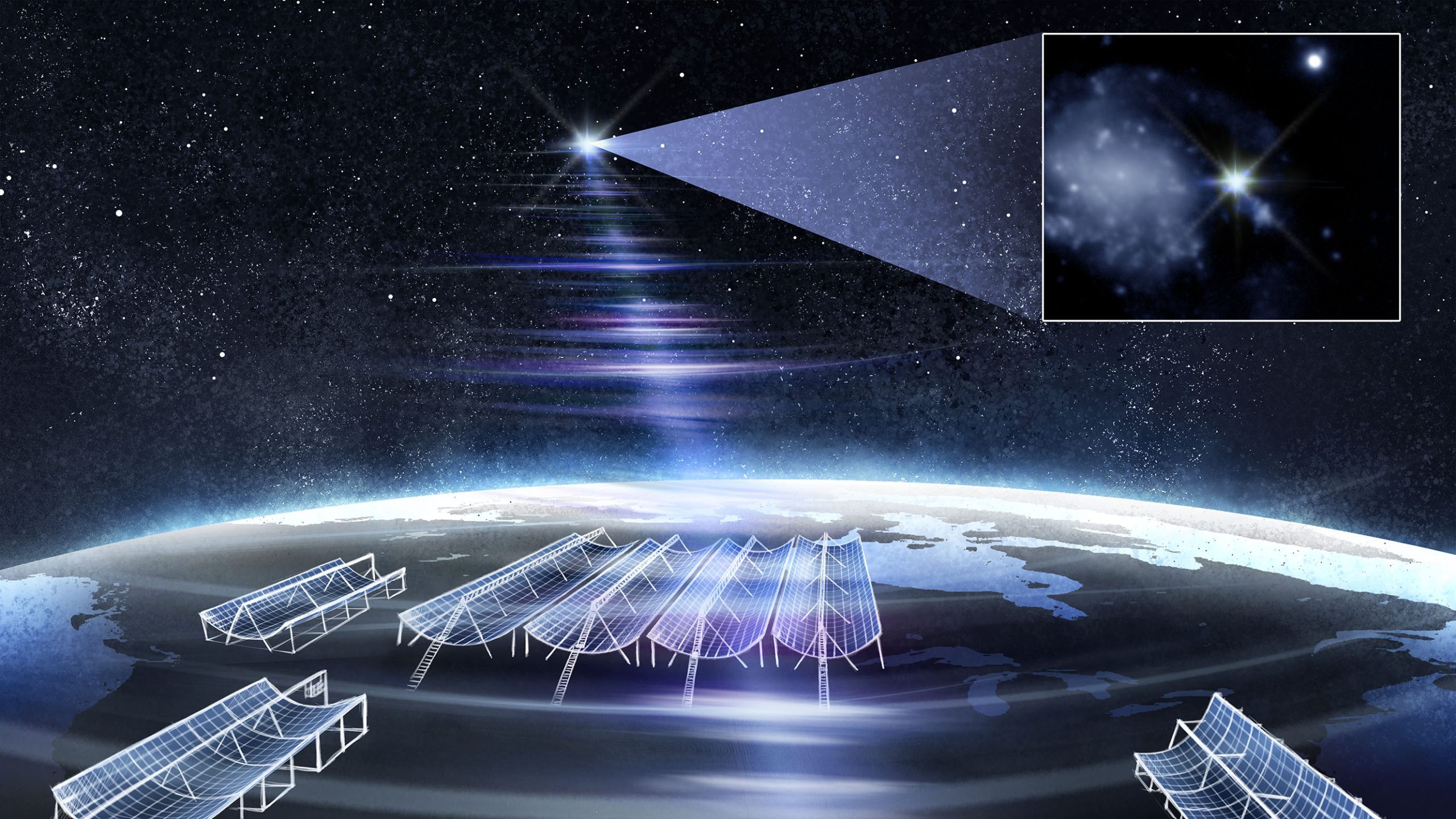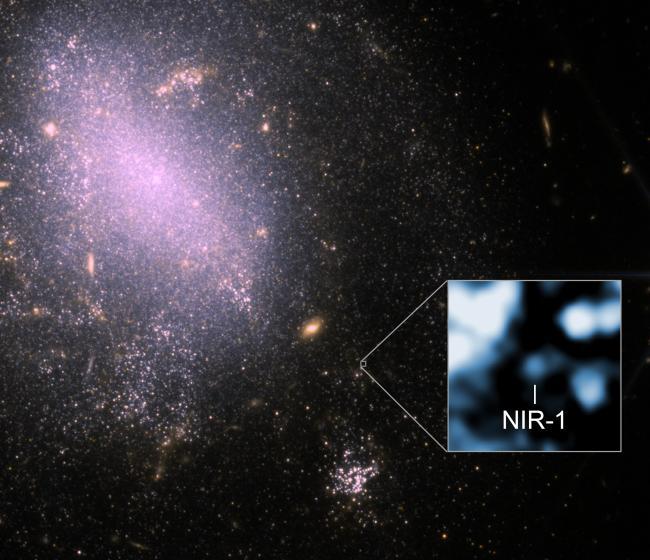31.08.2025

Artist’s rendition of CHIME/FRB and its Outriggers localizing FRB 20250316A/ RBFLOAT. Inset: The host galaxy (NGC 4141) as imaged by MMT Observatory (PI: Yuxin (Vic) Dong), illustrating the location of the FRB within a spiral arm of NGC 4141. Credit: Daniëlle Futselaar/MMT Observatory.
Physical properties provided by Keck Observatory data reveals surprising FRB environment
Maunakea, Hawaiʻi – A team of international astronomers, including observers using W. M. Keck Observatory on Maunakea, Hawaiʻi Island, have pinpointed the brightest fast radio bursts (FRBs) ever detected to a location in a nearby galaxy. The finding and the location surprised the team, offering new insight into one of astrophysics’ biggest mysteries: the nature of these transient phenomena.
FRBs are powerful, millisecond-long flashes of radio waves from beyond our galaxy. Researchers suspect that they are the result of extreme cosmic events but have, so far, been unable to determine their exact origin. FRBs are notoriously difficult to study because they vanish in the time it takes to blink.
The particularly bright FRB, referred to as FRB 20250316A, was detected in March from the direction of the Big Dipper by the Canadian CHIME/FRB radio-telescope. Affectionately dubbed “RBFLOAT” for Radio Brightest FLash Of All Time, it marks a significant change for researchers because it allowed for the precise identification of a point of origin using the radio burst itself.
The study, which highlights the burst discovery and Keck Observatory observations, was led by the CHIME/FRB collaboration and published in The Astrophysical Journal Letters.
New capabilities CHIME in
To investigate RBFLOAT’s origin, the researchers relied on CHIME’s newly completed “outrigger” telescopes, which spans North America from British Columbia to California, the team traced the burst to a region just 45 light years across – smaller than the average star cluster – in the outskirts of a galaxy about 130 million light-years away.
Key follow up data from the Keck Cosmic Web Imager (KCWI) revealed the environment of the burst as being a star-forming region that hosts massive stars in the relatively nearby galaxy NGC 4141 to determine that RBFLOAT is the closest non-repeating FRB detected to date.
“For the first time, we were able to constrain the gaseous environment the FRB originated from, including its density, the gas composition and even the depth of the FRB in the gas inferred from the light emitted by hydrogen, oxygen and nitrogen provided by the KCWI spectroscopy,” said Sunil Simha, Northwestern University and University of Chicago joint Brinson Fellow and co-author of the study, who led the Keck Observatory analysis and interpretation.
The KCWI spectroscopy provided the physical properties of the gas including the rate of star production in the galaxy, the total amount of gas present at any location in the galaxy and its density.
Due to its nearby proximity, the host galaxy of the FRB appears larger in the sky than those of more distant galaxies, providing the perfect opportunity for a detailed study of the environments that give rise to such events. Characterizing host environments enables researchers to identify the objects that are likely responsible for the production of FRBs.
“By studying the specific wavelength of red light emitted by hydrogen, a.k.a. H-alpha, in the KCWI data, we were able to determine the star-formation rate of the galactic neighborhood which showed the FRB happened near the edge of a star-forming region with massive stars,” added Simha. “Very few instruments match KCWI in terms of capabilities and sensitivity, and none in the North where RBFLOAT was discovered could make this measurement.”
To repeat or not to repeat
CHIME continues to monitor the full sky every day for bright FRBs to determine whether “non-repeaters” eventually repeat. Additionally, Simha hopes to build a statistical sample of KCWI observations of host environments to better understand FRBs and obtain answers to questions about FRB progenitors including what mechanism is responsible for their production and whether all FRBs are produced the same way or are there multiple-progenitor populations.
Quelle: W. M. Keck Observatory
+++

A James Webb Space Telescope (JWST) infrared image of the galaxy NGC 4141 containing the fast radio burst FRB 20250316A. This FRB was discovered March 16, 2025 using the CHIME Outrigger array. The inset shows a tiny area of the galaxy containing the FRB’s precise location, revealing the faint infrared source, NIR-1. This may be the binary companion of a neutron star that produced the FRB or fading light from an energetic outburst that produced the FRB. If NIR-1 is unrelated to the FRB, the young massive stars surrounding the FRB location also point to a neutron star origin.
Credit: NASA/ESA/CSA/CfA/P. Blanchard et al.; Image processing: CfA/P. Edmonds
